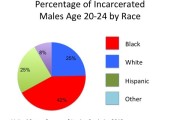One Flew Over the Spotless Mind
The Future of Lobotomy in Criminal Justice
I couldn’t help but think about Chief holding a pillow over Mac Murphy’s face when I listened to an interview on NPR about progress made toward erasing memories. The pitch for the research is couched in light much more similar to Eternal Sunshine of the Spotless Mind. The notion is that people suffering from terrifying memories could be “cured” of their resulting ailments, most notably PTSD.
Brief and Select History of Lobotomies
Wiping the slate clean for these emotionally wounded soldiers is not a new idea. The Wall Street Journal recently reported on as many as 2000 soldiers receiving lobotomies in the 1950’s. Not so long ago, Egas Moniz won the 1949 Nobel Prize in Medicine for developing the leucotomy (lobotomy).
Lobotomies were not reserved for “damaged” soldiers. Rusk State Hospital once performed as many as 75 per day after staff training by famed lobotomist Walter Freeman. The procedure of ramming a sharp metal stake into someone’s brain through their eye opening was a mainstream treatment for people that were diagnosed with anti-social behavioral conditions. This included “criminals” and homosexuals.
Where they are headed in our head
So, the brain doctors have put away their icepicks. “Optogentics” is just over the horizon for the science of brain scrambling. I had no idea either… Wikipedia describes it as using “light to control neurons which have been genetically sensitized to light.” My first thought was, “Lasers?” But of course not, that is just silly science fiction.
The researchers are implanting skylights into mice’s skulls. Through these ports they use fiber-optics or light beams to target neurons in an effort to change the pattern of transmissions. The particular neurons are made susceptible to this process by introducing certain proteins.
So, through our skylights the neuroscientists will stop the neuron activity that makes us feel a certain way about thoughts or memories. They hope to target traumatic memories that cause you persistent pain, anxiety, or depression. Clearly, this could make amazing positive changes in certain subjects’ lives. Perhaps this is the road to cure other brain disease that destroys many lives. But like any great scientific innovation, horror would likely ensue once the criminal justice system or law enforcement gets its hands on it.
(i.e. electricity = a chair to kill people)
Enlighten the Criminal Mind
Pardon the repeated cheeky puns, but I have to make small jokes to resist my compulsion to put on a tinfoil hat and hide in a cave. I have posted about the acknowledgement that much criminal tendency or motivation is the result of brain activity, rather than “choice.” The state of the art in death penalty defense requires mitigations specialists to gather mountains of information about the client from the womb to the day of trial. The hope is to pinpoint the moment that factors converge to transform a person into a killer. Without a doubt, understanding the roll that mental health plays in our criminal justice system should be our top priority. However, once we have found the cause, we must evaluate the cost of the cure.
I referenced to two critically acclaimed movies in my opening, but with this new technology our prison systems may move toward an even more poignant film, Demolition Man. In this film Sylvester Stallone and Wesley Snipes are sent to a prison where they are frozen and their brains are reprogrammed. After rehabilitation, Sly knits and Snipes knows judo. All of my favorite fictional dystopian governments believe they are doing what’s best for society. I cannot begin to answer the questions that this new brain-wiping technology raises.
Honestly, I am not intellectually equipped to ask the right questions. I’ll leave the majority of questioning to the bioethicists; the works of Vonnegut; the works of Huxley; and the acting of Stallone. However, as I am looking for wisdom, my mind often wanders into the memories I have of my grandmother, Myrtle Cofer. She was a seamstress. So, I ask myself, “How did I learn to sew?” …Practice and a lot of needle pricks.




